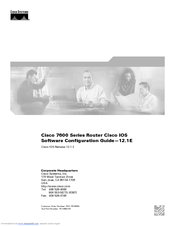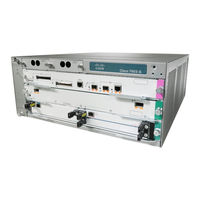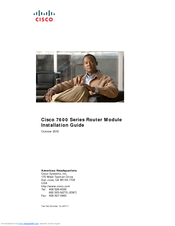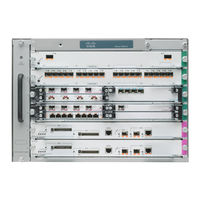Cisco 7609 Manuals
Manuals and User Guides for Cisco 7609. We have 9 Cisco 7609 manuals available for free PDF download: Configuration Manual, Installation Manual, User Manual, Installing, Brochure, Datasheet, Frequently Asked Questions
Cisco 7609 Configuration Manual (572 pages)
Cisco IOS Software Configuration Guide—12.1E
Brand: Cisco
|
Category: Network Router
|
Size: 6.96 MB
Table of Contents
Advertisement
Cisco 7609 Installation Manual (324 pages)
7600 Series
Brand: Cisco
|
Category: Network Router
|
Size: 11.91 MB
Table of Contents
Cisco 7609 Installation Manual (138 pages)
Router Module
Brand: Cisco
|
Category: Network Router
|
Size: 5.58 MB
Table of Contents
Advertisement
Cisco 7609 Installation Manual (120 pages)
Installation Guide
Brand: Cisco
|
Category: Network Router
|
Size: 2.26 MB
Table of Contents
Cisco 7609 User Manual (28 pages)
User Guide
Brand: Cisco
|
Category: Network Hardware
|
Size: 1.52 MB
Table of Contents
Cisco 7609 Installing (22 pages)
Internet Router
Brand: Cisco
|
Category: Network Router
|
Size: 0.65 MB
Table of Contents
Cisco 7609 Brochure (8 pages)
7600 Series Internet Router
Brand: Cisco
|
Category: Network Router
|
Size: 0.85 MB
Cisco 7609 Frequently Asked Questions (5 pages)
Cisco 7609: Frequently Asked Questions
Brand: Cisco
|
Category: Network Router
|
Size: 0.05 MB








